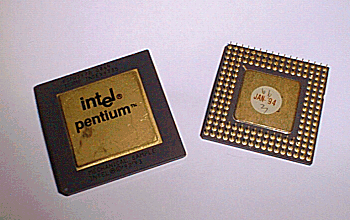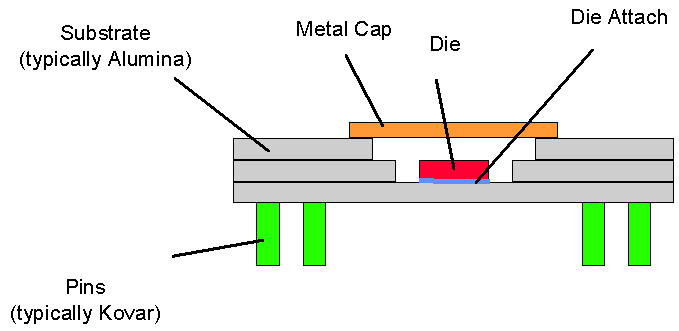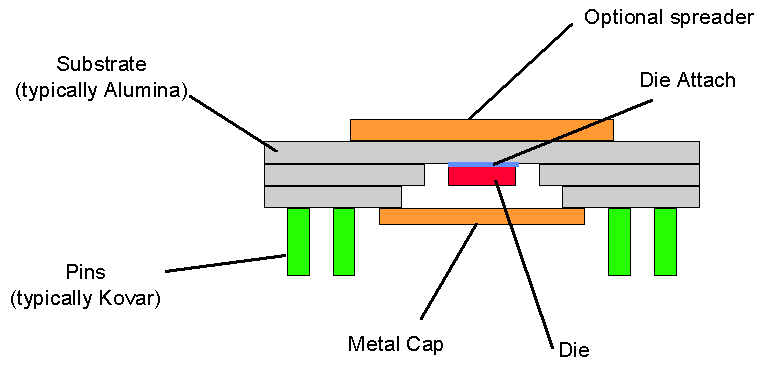Cavity-Up and Cavity-Down Ceramic Pin Grid Arrays (CPGA)
Introduction
Ceramic Pin Grid Array (CPGA) characteristics:
- Pins for 2nd level interconnect
- CPGAs are almost always wire-bonded, and this option is the only one currently available in FloTHERM PACK
Applications of CPGAs:
- High power parts (for example, processors)
- Military and space applications, in which reliability is critical
Figure 5-14.
Ceramic Pin Grid Array
General Thermal Considerations
CPGAs have good thermal characteristics due to the presence of ceramic substrate, which has a relatively high conductivity.
CPGAs are particularly suited to the use of heatsinks, especially when placed in sockets (which are poor heat conductors).
CPGAs are classified according to the relative positioning of the Die as follows:
- Cavity-up
- Cavity-down
Cavity-down CPGAs have a more direct thermal path to the heatsink than cavity-up CPGAs. Both types of CPGAs have a metallic lid to seal off the die cavity. There may exist a small (but sometimes significant) amount of radiation heat transfer between the lid and the die cavity.
Modeling Options
Due to the high conductivity of the ceramic substrate, the substrate usually offers a relatively low thermal resistance.
The die, die attach, and lid are modeled using cuboids.
The Bond Wires do not contribute significantly to the thermal behavior, hence they are ignored in the FloTHERM PACK model.
The pins are typically made of Kovar (an alloy), and are modeled as a lumped set of cuboids. The conductivity of the cuboids is obtained by volume averaging the portions occupied by the pins with the socket or board material that fills the gaps between them.
Material Properties
Thermal conductivities:
Alumina: 21 W/(m.K)
Kovar: 17 W/(m.K)
Validation & References
- Harvey Rosten & Ram Viswanath, Thermal Modeling of the Pentium Processor, Proceedings of the ECTC Conference, May 1994.
- Howard Rajala & Christie Ryan, Simple Temperature Measurements to Calibrate a CFD Model of CPGA/Heatsink Assemblies to Optimise Heatsink Performance, Proceedings of the IEPS Conference, September 1994.

